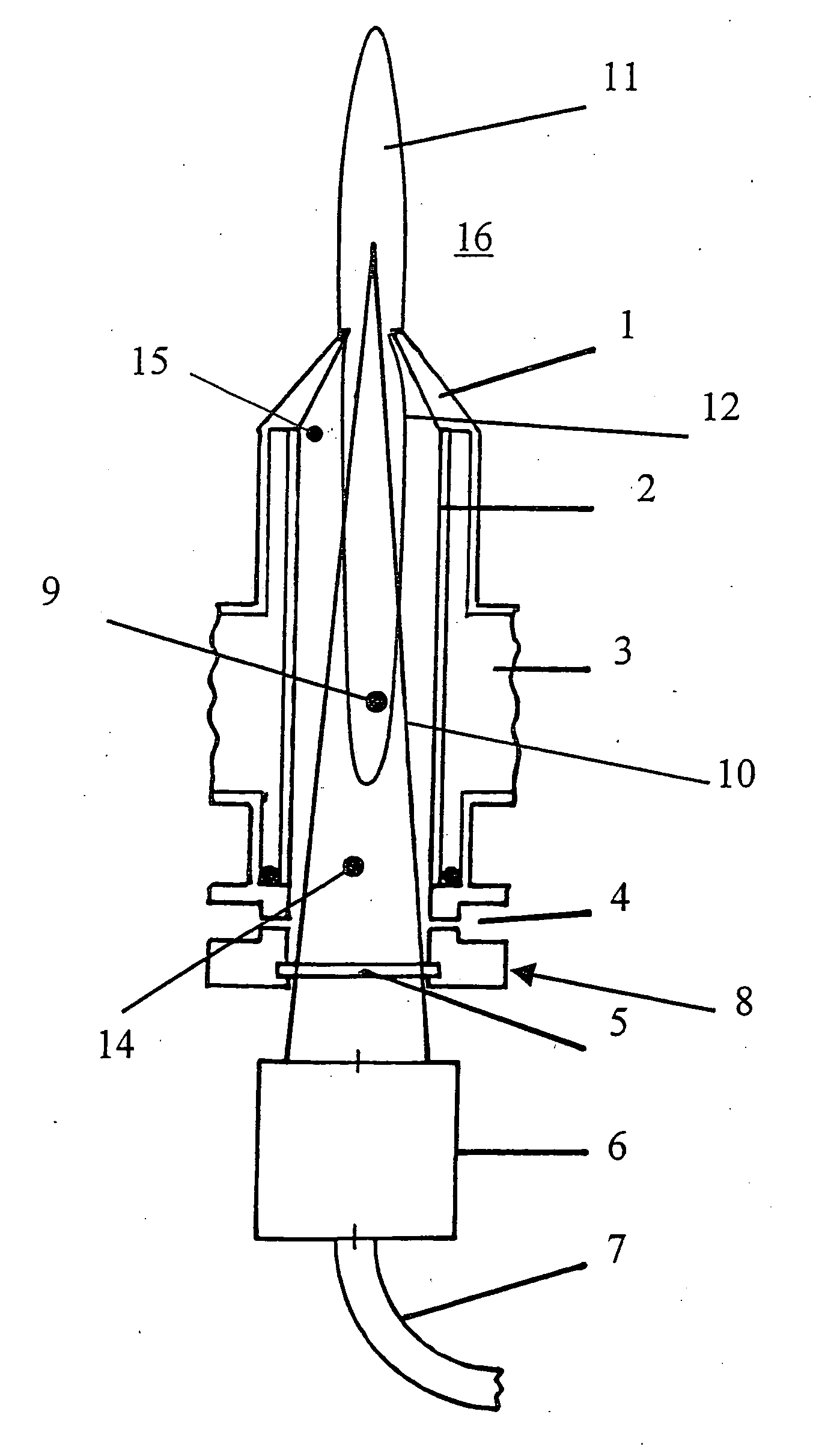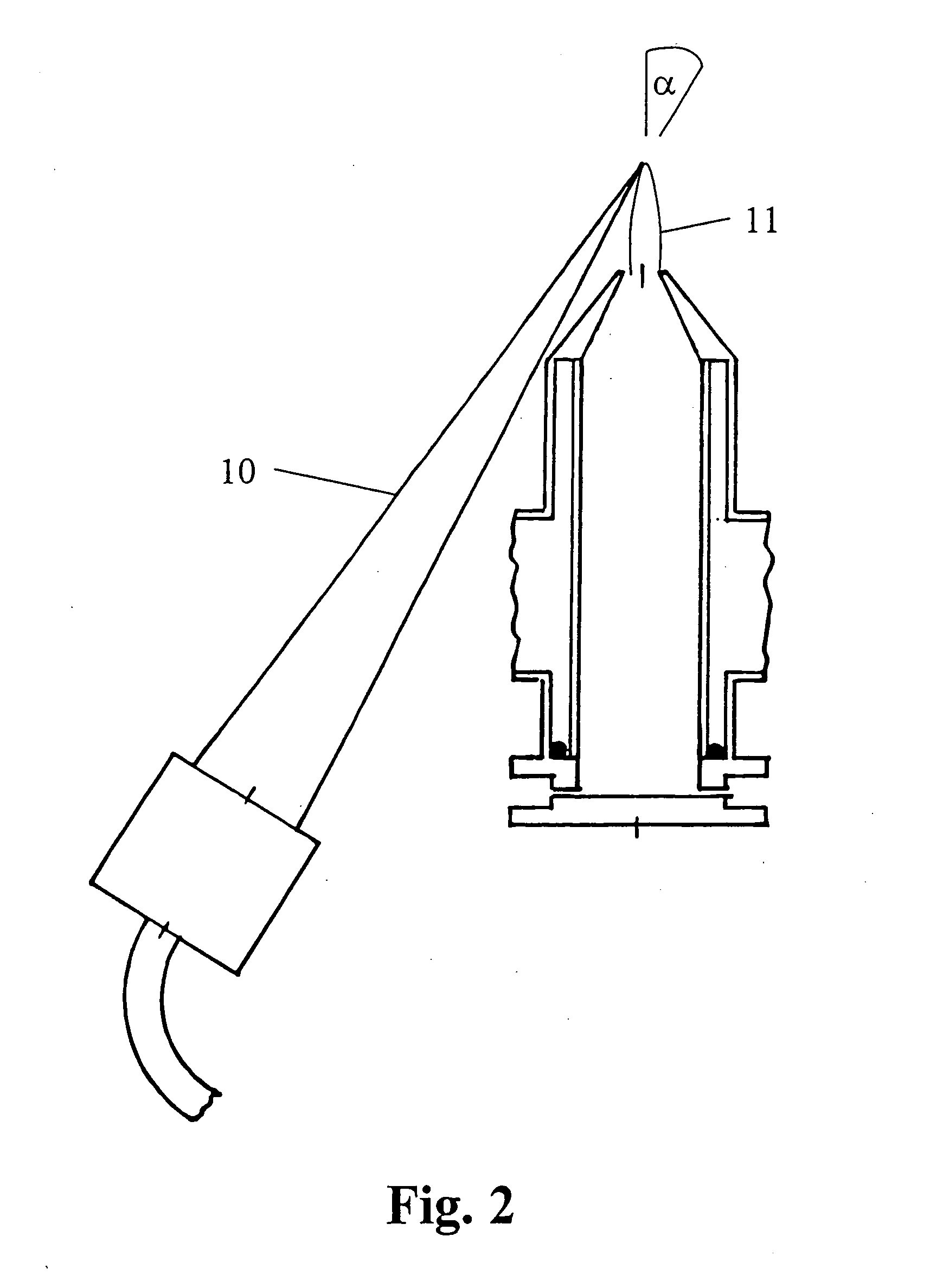Laser-plasma hybrid welding method
- Summary
- Abstract
- Description
- Claims
- Application Information
AI Technical Summary
Benefits of technology
Problems solved by technology
Method used
Image
Examples
first embodiment
FIG. 1 shows a sectional illustration of a first embodiment for carrying out the process according to the invention. In this embodiment, the laser beam 10 runs through the microwave-transparent tube 2. The illustration shows a microwave-transparent tube 2 which is guided perpendicularly through a hollow waveguide 3 which transports the microwaves generated by a microwave source (not shown). In this case, commercially available waveguides can be used as hollow waveguide 3. However, it is also possible to use hollow waveguides which have a narrowing in the cross section in the region in which the microwave-transparent tube 2 runs through the hollow waveguide 3.
The microwave-transparent tube 2 has a gas inlet opening 14 for the process gas and a gas outlet opening 15 for the plasma 12. The plasma 12 is generated by microwave absorption in the region 9 in which the microwave-transparent tube 2 runs through the hollow waveguide 3.
At the gas inlet opening 14, the microwave-transparent ...
second embodiment
FIG. 2 shows a sectional illustration of a second embodiment for carrying out the process according to the invention. In this embodiment, the laser beam 10 runs outside the microwave-transparent tube 2. The laser beam 10 and the plasma jet 11 are in this case arranged at an angle to one another which is such that they are brought together downstream of the nozzle 1, as seen in the direction of propagation of the plasma jet. The plasma jet 11 and the laser beam 10 are generated as described in FIG. 1.
PUM
| Property | Measurement | Unit |
|---|---|---|
| Frequency | aaaaa | aaaaa |
| Frequency | aaaaa | aaaaa |
| Angle | aaaaa | aaaaa |
Abstract
Description
Claims
Application Information
 Login to View More
Login to View More - R&D
- Intellectual Property
- Life Sciences
- Materials
- Tech Scout
- Unparalleled Data Quality
- Higher Quality Content
- 60% Fewer Hallucinations
Browse by: Latest US Patents, China's latest patents, Technical Efficacy Thesaurus, Application Domain, Technology Topic, Popular Technical Reports.
© 2025 PatSnap. All rights reserved.Legal|Privacy policy|Modern Slavery Act Transparency Statement|Sitemap|About US| Contact US: help@patsnap.com



